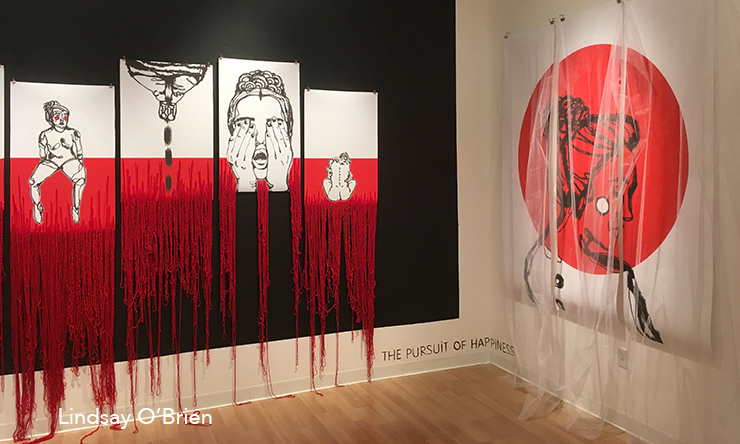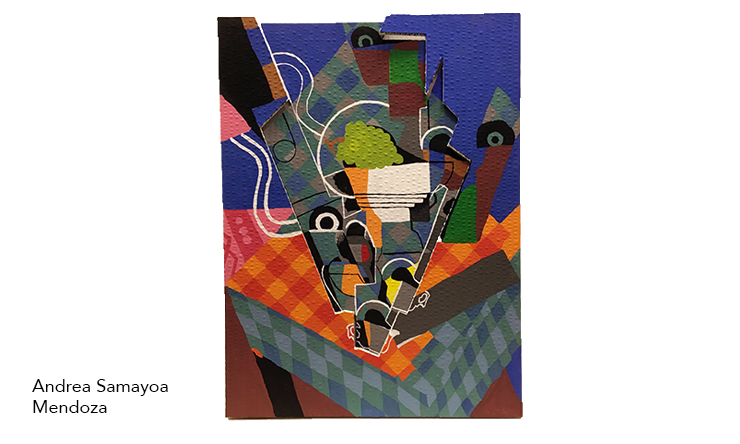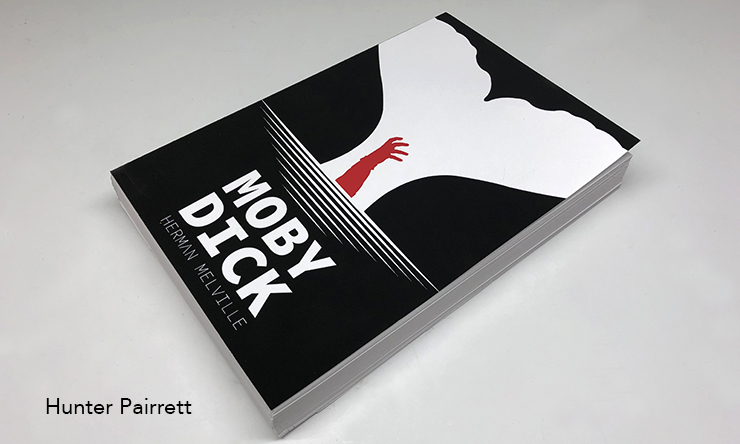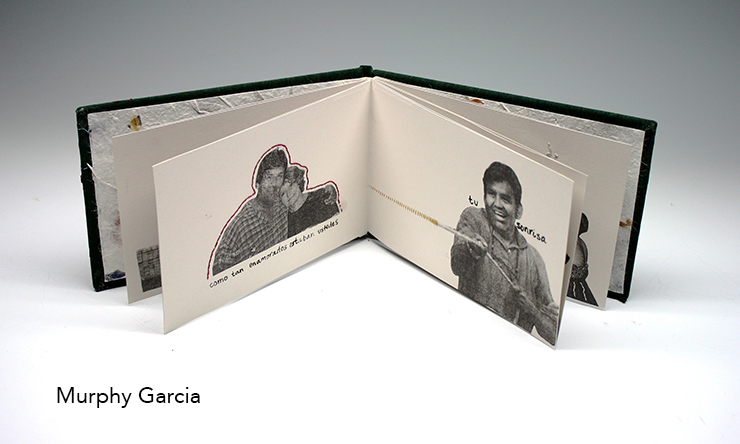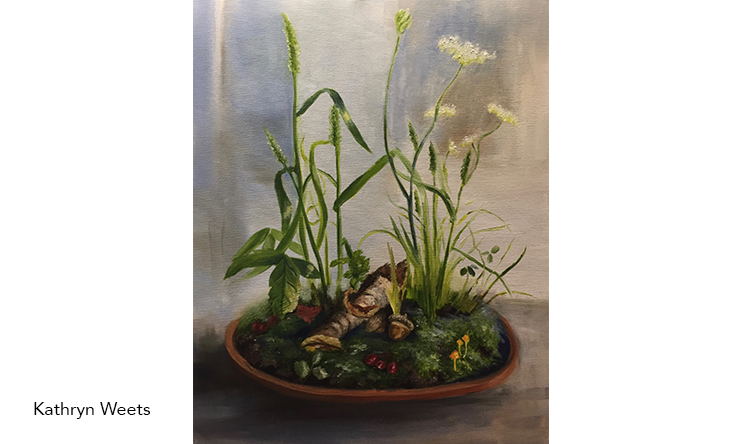Art Scholarships
Portfolio Requirements for a Scholarship
In order to adequately evaluate your portfolio for a financial award, the following must be included:
1. 10-12 original works of art/design work (high-resolution .jpg or .pdf) in a variety of media - 2D and 3D (if applicable) - that show the breadth of your technical and creative skills. These files can be submitted online or mailed on a CD/flash drive.
2. A list with the following information:
- Name
- Medium
- Date created
- Class project or independent work
SAU Art Department
Examples of art work by Kathryn Weets (Painting), Murphy Garcia (Graphic Design), Hunter Pairrett (Graphic Design), Andrea Samayoa Mendoza (Painting), and Lindsay O'Brien (Graphic Design).
Creating and Submitting Your Portfolio
Digital submissions are accepted on an ongoing basis, but preference is given to those who submit before March 10.
Creating an effective portfolio is not as easy as it seems. What you are creating is a rank-and-file representation of how smart, experienced, hip and aware you are as an artist, and this takes some doing.
Although no portfolio will contain all of the items on the list below, a strong one will contain a diverse sampling. Cover as many bases as you can and don't hesitate to ask advice from your teachers, trusted friends and, of course, professional artists. Art programs are looking for evidence of the depth and breadth of your artistic proficiency and dedication, but this is tricky to communicate to an audience that doesn't know you well.
For convenience sake, most projects created in high school are done inside the art room. Occasional sketchbook assignments take you out of the classroom into the "real world" but result in very few finished works from observation. Scenes with bridges, commercial buildings, trees, bodies of water, suburban yards, clouds, weather conditions, various qualities of light, and candid views of daily activity are, sadly, very rare in portfolios. Anywhere an artist might take a camera should be considered an artistic possibility for images in other media.
The portability of a sketchbook facilitates easy chronicling of what you see and think in a given day. It's also an excellent place to catalogue and comment on your influences. When you travel, when you study art history, when you find important artists and art works you like, when you discover interesting patterns or ideas, include them in your sketchbook and comment on them. Write down why you find them interesting-why you'd like to be influenced by them.
Series of thumbnail sketches are useful to demonstrate the way you analyze a complex scenario and the way you choose an appropriate aspect of the subject for composition and content. Accompanying your sketches with written descriptions of what, when, where, why, and how of your chosen subjects will make the drawings more valuable later.
The following is a list of works that might be found in an unusually diverse and strong portfolio:
- Examples of all the major media you've worked with (prints, drawings, watercolors, photography, sculpture, printmaking, graphic design, oil/acrylic, jewelry, etc.)
- Stylistic variety from loose to tight; exacting to expressionistic; realism and expressive distortion
- Color and black-and-white work
- Work on-site from observation, e.g. still-life, landscape, architecture, portrait, figure studies (analysis)
- Work from invention and imagination (synthesis)
- Quick sketches/sketchbook-rapid stylish notation of ideas from both imagination and direct observation
- Extra depth in areas of keenest interest (2-4 pieces of your specialty)
- Realism (see note below regarding photographs) and abstraction·
- Personal work made independent of class exercises-shows that you have a mind of your own!
- Graphic design ability-computer skills, software knowledge· Use of and knowledge of type, approaches to illustration and layout
- Examples of your design abilities (T-shirts, brochures, posters, flyers, CD jackets, books, advertising layouts etc.)
- Use of traditional art media in a design context, especially for graphic design and book arts majors
Don't copy photographs unless you significantly transform them or the photographic image is just one of multiple sources of information you use to create the art work.
Avoid logos (unless original), cartoon figures, pop culture heroes and heroines (unless your artistic personality overcomes likeness).
Avoid muscle cars, unicorns, bloody skulls, pets, dewy-eyed babies, and flowers unless you are capable of nudging these sentimental or clichéd subjects into an original and powerfully expressive form.
If this sounds cruel, remember that every art teacher has seen these stale genres in droves and are predisposed NOT TO LIKE THEM!
This is an exciting, formative time of your life when growth, learning and self-realization are everyday challenges. Let your portfolio reflect the complexity of your life and your struggles to understand and master your unique circumstances. This unique, artistic "fingerprint" will make your work stand out and give you the best chance to get you where you want to go.
Good luck!
Portfolios can be submitted online, emailed to quinnkristin@sau.edu, or mailed to:
Terri Buesing-Flynn
St. Ambrose University
518 West Locust Street
Davenport, IA 52803
Schedule an appointment by contacting Terri Buesing-Flynn, 563/333-6001.
Contact
Joseph Lappie, MFA, Department Chair
Art
Galvin Fine Arts Center 7
518 W. Locust St.
Davenport, Iowa 52803
563-333-6428
LappieJosephD@sau.edu

